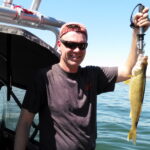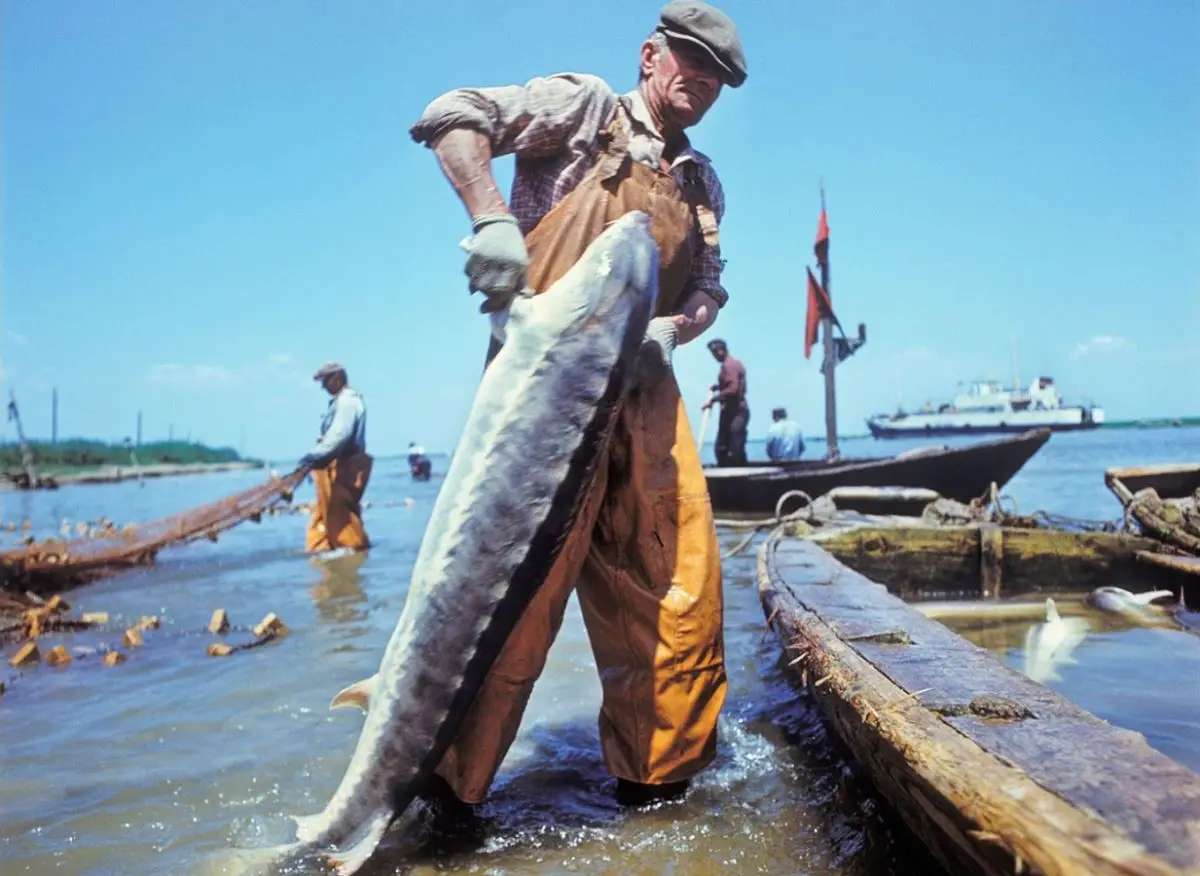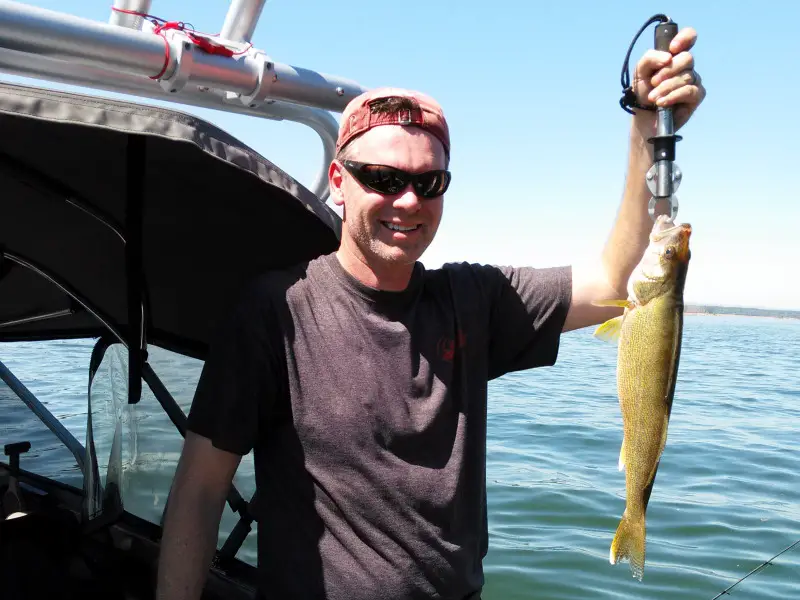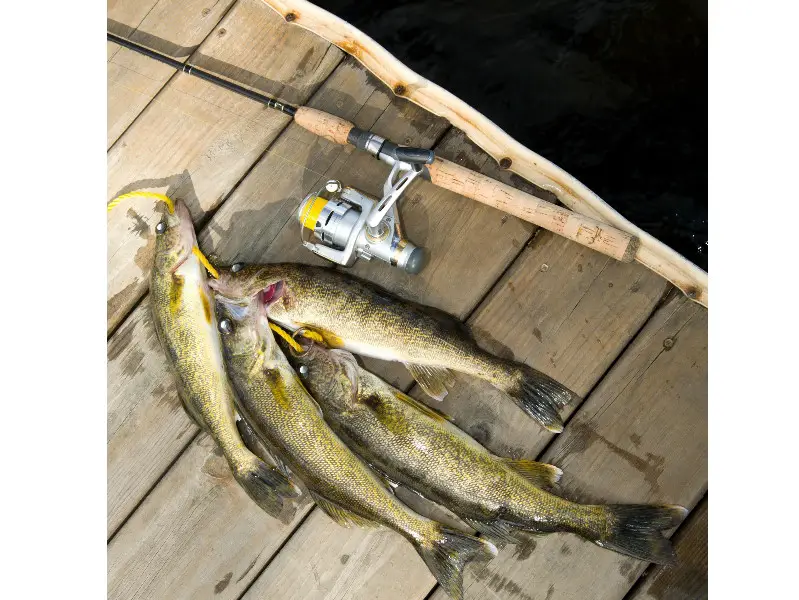The walleye is a freshwater fish found in many large lakes across the United States and Canada. It’s one of the most popular sport fish in North America, and you are guaranteed to find a great restaurant dedicated to the culinary delights of this tasty fish. Luckily, if you’re an angler, you don’t have to worry about this fish putting up a great fight.
Compared to other fish, walleye are docile and less skittish. They do not have the fight other species, such as bass and trout, have – even during spawning seasons when they’re known to be more aggressive. When hooked, walleyes are known as a load of dead weight, producing little to no fight.
The walleye’s lack of fight sounds like it would make this fish less likely to be sort after by anglers looking for a challenge. However, this is not the case simply because walleyes are some of the best-tasting freshwater fish. This article will look closely at a walleye’s lack of fighting nature and where and how they can be caught.
Note: most links in this article are Amazon.com Affiliate links, see Affiliate Disclosure, thank you.
Why Walleyes Don’t Fight
The walleye is probably the fish that has given the worst fighting experience to anglers over the years. There are many stories of fishermen who’ve caught walleye after walleye, only to be disappointed at what they felt was a lackluster fight. But is that because they’re weak fish or crafty fighters?
Fish are fish, and I’d like to think that all sport fish would put up a good fight, but walleye don’t fight hard pound for pound. Bass and trout take more line off your reel when they run, but a big walleye could quickly put up less of a battle than either.
When you think of a fish fight, most people think of bass, bream, or trout. These fish are often seen leaping out of the water while they put on a show for anglers. Generally, a walleye will seem like dead weight on the end of your line, ensuring it puts up little to no fight.
However, this doesn’t mean a walleye won’t fight you for every inch. The thing about walleye is that they don’t like the look of the boat. They’ll play along with you as long as they can until you get too close to them, and then they’ll attempt to make a run for it.
Generally, it’s in the walleye’s nature not to put up for a fight, even during spawning season when they become more aggressive. This makes it an unlikely candidate for a species prized for its meat. But the walleye has something going for it: it’s plentiful and resilient.
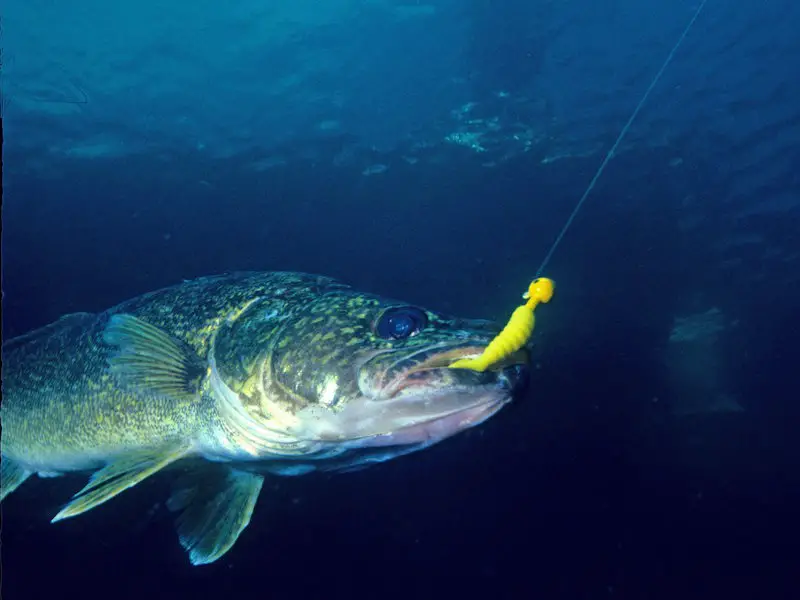
Where and When To Catch Walleyes
As a native fish to Canada and the United States, walleyes mainly dwell in the Great Lakes and its tributaries. Therefore their native range is across a considerable amount of the US.
However, like many fish species, they have traveled throughout the country. Today they are found in the Colorado River System and further south in Texas as well.
Wallies thrive in large bodies of water, such as lakes and slow-moving rivers.
They prefer to stay near underwater structures like trees, fallen logs, and rocks where they can find their prey, primarily small baitfish. They aren’t speedy swimmers, so they rely on this type of cover for protection from predators.
When hunting, walleyes will move to shallower waters in both lakes and rivers. Their eyes are sensitive to light, so hunting takes place during hours with little to no light.
Therefore the best times to fish would be at dawn or dusk during spring and again in early fall, although there is no set rule about when they’ll bite.
During these hours, your best spots to through a line in the water would be near the river banks and any fallen trees in shallow waters.
On the Lower Columbia River, my local river system, walleye hold in shallow rocky outcrops as well as deep areas. The main feature is that the water slows and provides walleye a place to sit and wait in ambush.
The deep areas are typically in dam pools. In the middle of the stretches between dams, you can find walleye grouped across the bottom. These pools are perfect for a curly tail jig or blade bait.
How To Catch a Walleye
When it comes to easy fishing, walleye reign supreme.
There’s nothing quite like sitting back and letting the fish come to you on a calm summer night, with a half-moon reflecting off the still water and the stars twinkling in the clear sky above.
When conditions are just right, walleye fishing can be one of the most relaxing ways to spend an evening outdoors.
If you’re planning on fishing for walleye this summer, you may wonder which method is best for you. Below are brief descriptions of each fishing technique so you can start thinking about how you want to go about it:
- Bait: Due to its versatility, live bait fishing is one of walleye anglers’ most widely used techniques. Walleyes have a varied diet, and they’re greedy fish, so they’ll take just about any option you give them. However, minnows generally work best.
- Lures: Some walleye anglers enjoy using lures to catch their prey. An advantage of this technique is that you can cover water quickly and efficiently. Lures are put to good use when walleye are most actively feeding. Consider using jerk baits, blade baits, and crankbaits.
- Jigs: Experienced walleye fishermen argue this technique is the best and most effective. The jig is a hook with a weighted head on the most basic level. The hook’s body allows it to be cast out into the water, and the weight on its head helps ensure it will sink deep enough to attract fish. The curly tail jig is one of the most effective for walleye.
- Trolling: Trolling refers to any method of fishing in which an angler can cast a line and then have it pulled through the water at a steady speed by a moving boat. It’s an effective technique to cover a lot of ground and find fish. While almost all lures and baits can be used for trolling, the best bait for catching walleye is live bait. The video below features a trolling setup; check it out.
Walleyes Are Quality-Eating Fish
Walleyes may not be the fish that jumps out of the water and makes the angler’s face light up with a huge smile, but they are quality eating fish.
The walleye is a delicious fish that is eaten in various ways. It has a mild, sweet flavor, and some even describe it as buttery.
It’s low in fat, so it’s an excellent choice for heart-healthy diets, and it’s also very high in protein. The fish is flaky and tender, making it a perfect choice for an array of dishes, from deep frying to pan frying to grilling.
Summary
One of the great things about fishing is that you don’t have to be a professional to catch fish. The challenge can be mastering the techniques, but once you’ve got that down, it becomes a fun game of chance.
The walleye is arguably the most popular fish in North America due to its delicious taste. They are known for being less aggressive than other freshwater fish – simply because it’s in their nature.
While many different fishing techniques can be used to catch a walleye, anglers’ two most widely used methods are live bait or a jig.

